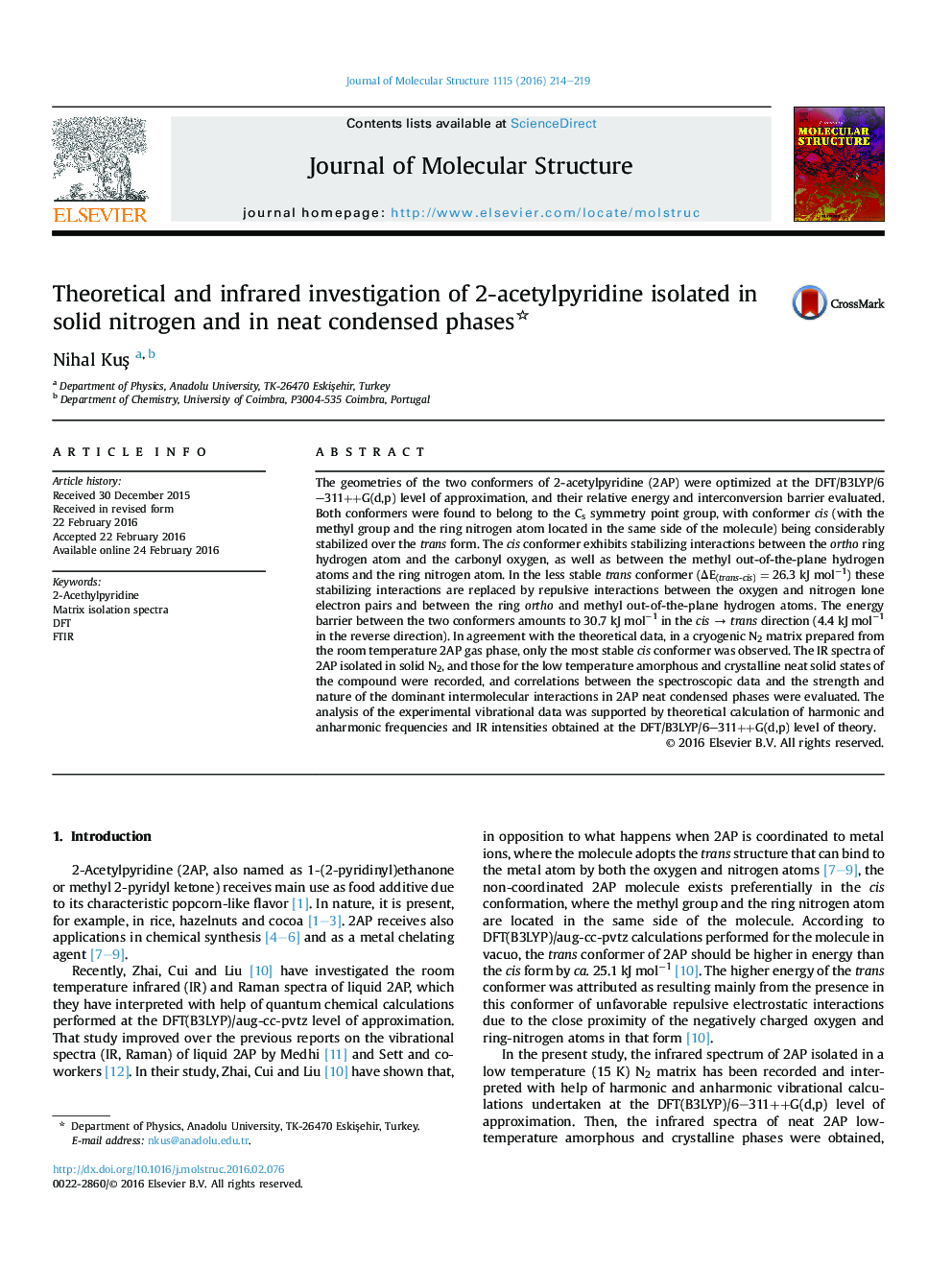| Article ID | Journal | Published Year | Pages | File Type |
|---|---|---|---|---|
| 1405006 | Journal of Molecular Structure | 2016 | 6 Pages |
•Conformers of 2-acetylpyridine (2AP) were investigated using the DFT method.•Infrared data for 2AP in a solid N2 matrix, low-temperature amorphous and crystal were obtained experimentally.•Evaluation of the dominant intermolecular interactions in 2AP neat condensed phases was undertaken.
The geometries of the two conformers of 2-acetylpyridine (2AP) were optimized at the DFT/B3LYP/6–311++G(d,p) level of approximation, and their relative energy and interconversion barrier evaluated. Both conformers were found to belong to the Cs symmetry point group, with conformer cis (with the methyl group and the ring nitrogen atom located in the same side of the molecule) being considerably stabilized over the trans form. The cis conformer exhibits stabilizing interactions between the ortho ring hydrogen atom and the carbonyl oxygen, as well as between the methyl out-of-the-plane hydrogen atoms and the ring nitrogen atom. In the less stable trans conformer (ΔE(trans-cis) = 26.3 kJ mol−1) these stabilizing interactions are replaced by repulsive interactions between the oxygen and nitrogen lone electron pairs and between the ring ortho and methyl out-of-the-plane hydrogen atoms. The energy barrier between the two conformers amounts to 30.7 kJ mol−1 in the cis → trans direction (4.4 kJ mol−1 in the reverse direction). In agreement with the theoretical data, in a cryogenic N2 matrix prepared from the room temperature 2AP gas phase, only the most stable cis conformer was observed. The IR spectra of 2AP isolated in solid N2, and those for the low temperature amorphous and crystalline neat solid states of the compound were recorded, and correlations between the spectroscopic data and the strength and nature of the dominant intermolecular interactions in 2AP neat condensed phases were evaluated. The analysis of the experimental vibrational data was supported by theoretical calculation of harmonic and anharmonic frequencies and IR intensities obtained at the DFT/B3LYP/6–311++G(d,p) level of theory.
Graphical abstractFigure optionsDownload full-size imageDownload as PowerPoint slide
